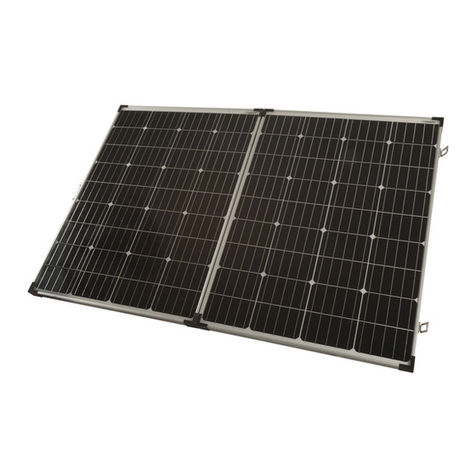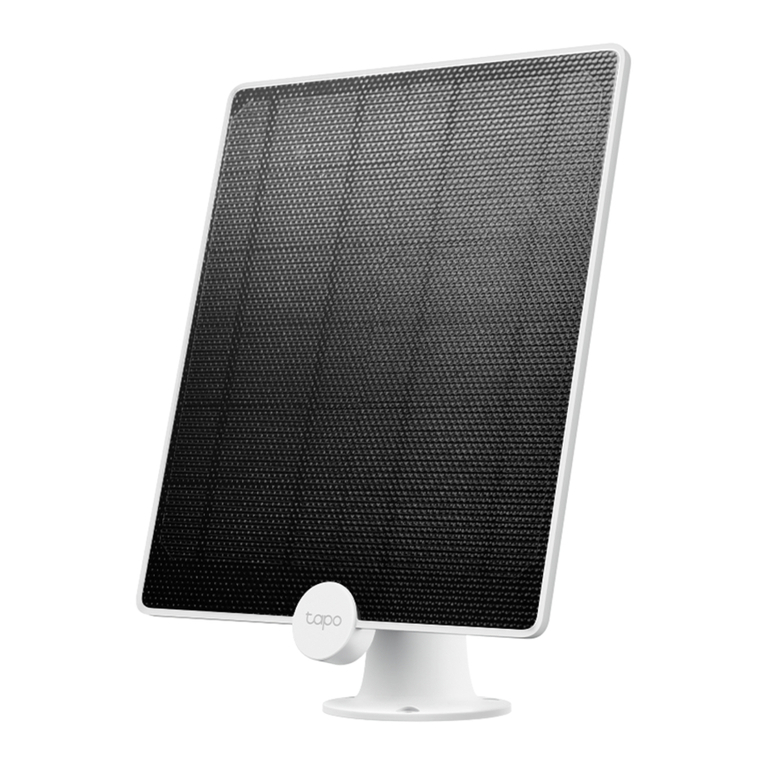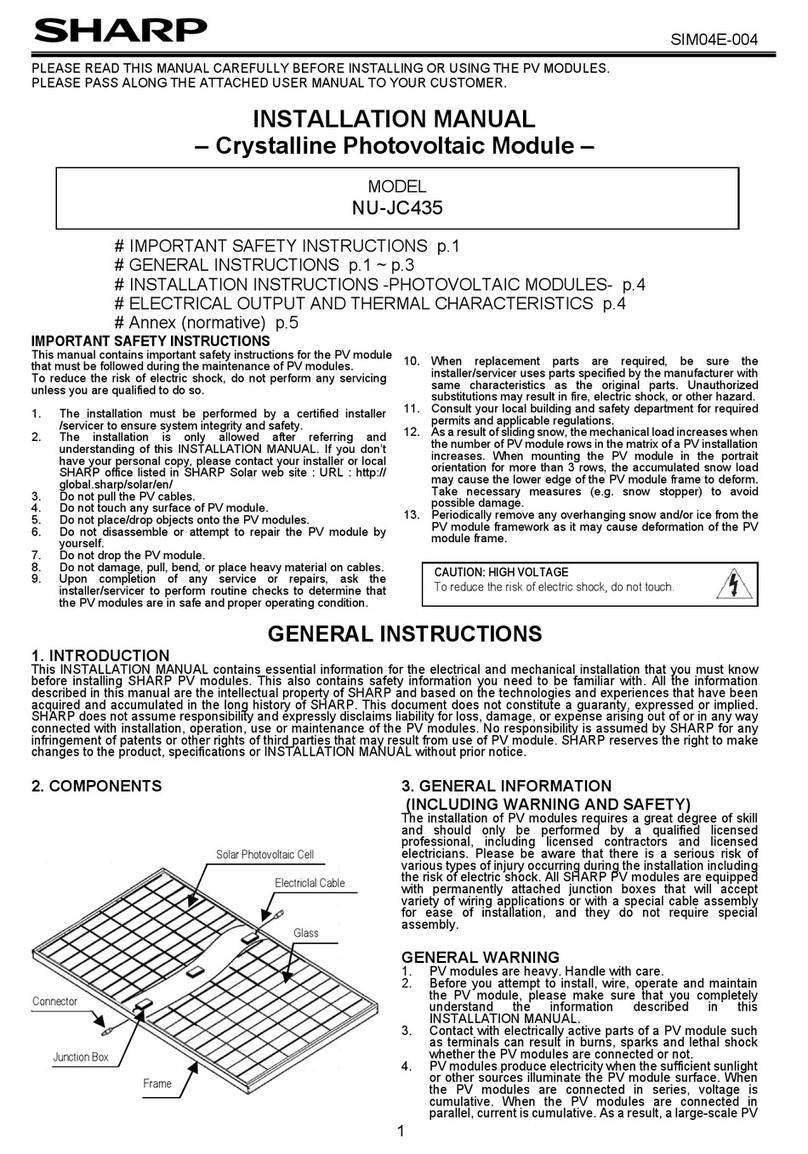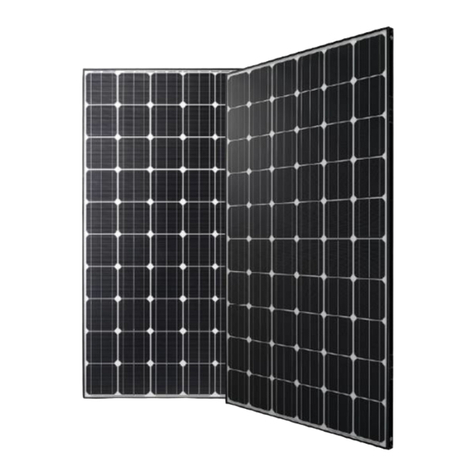Thermo King ThermoLite User manual

TK 56237-11-IM (Rev. 0, 11/15) Copyright© 2015 Thermo King Corp. Minneapolis, MN, USA
ThermoLite™ 100W-300W Solar Panel Installation Guide
General Installation Precautions and Specifications
NOTE: This equipment is designed and rated for 12V DC nominal systems.
The solar panel, application surface and air temperature must all be above 45 F (1.3 C).
For best results when applying the panel adhesive, ensure the surface is completely clean using
Isopropal alcohol or appropriate de-greasers. Ensure all cleaning residue is removed and the surface is
dry.
• The adhesive backing is very aggressive and is difficult to remove once installed.
• Always ensure the solar panel fuse (located on the positive battery harness) is removed during
installation or service.
• Always locate the charge controller near the unit’s battery to avoid voltage loss in the cable.
100W Base kit Installation
1. Turn off the refrigeration unit and any accessory equipment including standby power connection to
the truck or tractor.
2. Disconnect the negative battery cable of the refrigeration unit and any accessory battery packs used
for lift gate or other auxiliary equipment.
3. Temporarily remove fuse from solar panel harness.
4. Panel installation location on the truck/trailer can be either the front or the back. Factors to be
considered are:
a. If reefer unit is present with existing two-pole (two wire) connections with a wire gauge of 12 AWG
or larger to the liftgate batteries, then the panels should be installed on the roof of the trailer near
the front to utilize the existing connections (Figure 1).
b. Front of the trailer installations are generally preferred so vehicles parked against a building will
not shade the panels and reduce performance
c. Consider installing the panels away from tractor and unit exhaust. The panel may be positioned
length wise or perpendicular to the trailer roof edge. Exhaust soot build-up on the panel can result
in decreased performance of the panel if not cleaned.
d. The junction boxes should be positioned closest to the edge of the trailer end and lined up with
the planned wire route.
e. If snow scrapers are to be used for winter snow removal, position the panel with the long edge
containing the junction box aligned to the front edge of the trailer so the sloped edge of the
junction box is facing forward (Figure 2).
WARNING: Always wear safety glasses and protective gloves when working with batteries. Your
company may require additional PPE. Consult your company safety policy and requirements prior
to installation of this product.

2
f. If the battery box is located at the very rear of the trailer, the panels could be located at the rear
trailer with protected cable routing down the back (Figure 3).
5. Plan the panel layout and wire routing prior to permanently mounting any equipment. Familiarize
yourself with the components to be installed (Figure 4). Make sure wire routes are free from abrasive
materials and have adequate clearance from hot surfaces. Any holes through metal frames, skins or
structures should be smooth and non-marring or be lined with a grommet prior to routing wires.
Figure 1 Figure 2
Junction Box
2 Solar Panels Shown
Single Solar Panel Installation Shown
Figure 3
Rear of Trailer

3
.
Figure 4
6. Ensure the top surface of the installation location is clean and free of any dirt. Suggested cleaners:
Isopropal alcohol, de-greaser. If needed, use a scouring pad to remove built-up oxides and residue.
Ensure all cleaning residue is removed and surface is dry and above 45 F / 1.3 C (Figure 5).
Figure 5
7. Peel back the adhesive backing and apply the panel edge with the Junction Box near the outer edge
of the trailer to utilize any existing rivet strips for mechanical fastening and to minimize harness
routing on the top of the truck/trailer.
8. With the panel properly positioned, remove the remainder of the adhesive backing and firmly press
the panel down over the entire area. Ensure the entire panel is properly adhered to the surface. This
is critical to prevent moisture between the surfaces (Figure 6).
Junction Boxes
Positive
Battery
Cable
w/Fuse
Negative
Battery
Cable
Charge Controller
(Install near the battery)
Extension Harness
Y-Harness Solar Panels

4
Figure 6
9. Mechanical fasteners used to anchor panel can also include the use of p-clamps to anchor cables as
needed. Defer the steps 10 & 11 until after cable installation if that is the case.
10.Use the provided self tapping screws or rivets to anchor the panel through the panel grommets into
any exterior rivet strips that will not compromise the integrity of the trailer roof. Not all panel grommets
need anchors (Figure 7).
a. Use sealant and cover completely the bottom of all rivets or screws used in install. No metal should
be exposed.
Figure 7
11.If additional panels are being installed follow steps 5- 10 above and repeat to co-locate all panels.
a. Utilize the y-cables to connect multiple panels together in parallel.
b. A maximum of three 100 W panels can be connected in parallel
12.Secure any excess cable off of the roof if possible. Any rooftop cables should be secured using
mechanical fasteners, p-clamp anchors or high-bond adhesives.

5
13.The extension harnesses are provided with one non-plugged end and a loose connector housing.
Verify the polarity of the cable to the panel and charge controller prior to routing the wire. Plan your
route and route the wiring starting with the non-plugged end.
14.Route the extension harness down the front or back of the trailer and through any existing conduits if
possible.
a. Add grommets to holes in frame or skins as needed to protect wiring.
b. Route towards the battery box or connections to the batteries to be charged using existing cables.
15.Verify that any existing cables used meet or exceed the wire gauge of the wiring supplied with the
solar panels.
a. Do not route the cable next to any heat sources or any sharp edges without adequate clearance or
additional cable protection.
b. If the cables are routed through new or existing holes in metal structures, grommets (installer
provided) must be used to protect the cables.
16.Secure the charge controller near the batteries or adjacent to the existing two pole front of trailer
connection points using mechanical fasteners (Figure 8).
Figure 8
17.Once the wiring is in place, take the loose connector end provided and plug the black wire into
position “A” and the white wire into position “B”.
a. Pull back slightly on the wire after hearing a “click” to make sure the terminal is properly seated.
b. Fold the retainer clip onto the back of the connector until you hear a “click”. Make sure the retainer
clip is secured.
18.Connect the extension harness to the charge controller.
19.Connect the battery terminal harness to the charge controller and route the white/red wire to the
positive terminal on the battery or to the two pole connection location. If existing wiring is to be utilized
it must meet or exceed the 12 AWG wire gauge of the wiring supplied with the solar panels.
NOTE: If the existing wiring quality or gauge is in question, add additional new solar panel
extension cables as needed and route the panel wiring to the battery box location and install the
charge controller and battery harness at the battery box location as seen in Figure 7.
20.Attach the black wire to the negative ground of the battery or to a common ground stud or terminal.
21.Install fuse in solar wire harness.

6
22.Reconnect negative battery connections.
23.Verify that the solar panels are charging the batteries by moving the unit into the sunlight and
measuring the current on the solar wire harness using a clamp-on DC Ammeter. The charge controller
may take up to one minute to turn on and requires the battery voltage to be at 12.3 V or lower to start
a charging cycle. Activating the equipment running off the battery will drop the battery voltage to this
level and start the charging cycle.
24.Install the yellow Caution label (Figure 9) on the liftgate battery box or near the solar panel terminal
connection. The label must be visible to servicing technicians to warn of additional charging sources.
Figure 9
Table of contents
Other Thermo King Solar Panel manuals
Popular Solar Panel manuals by other brands
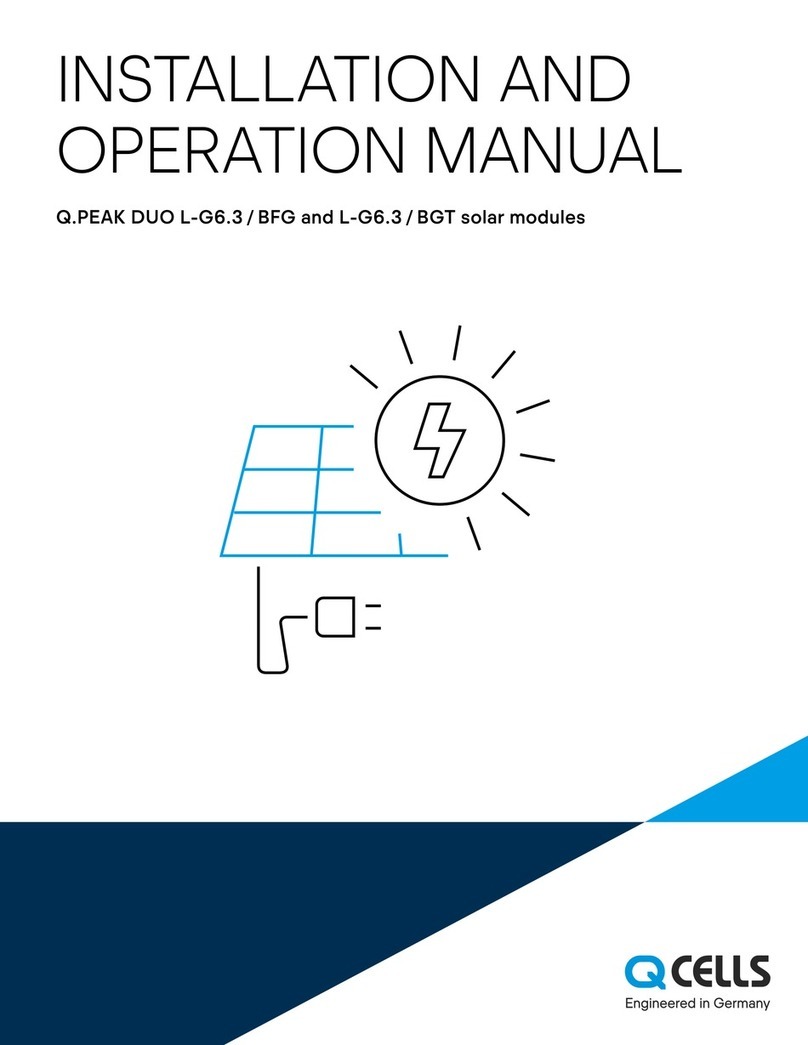
Qcells
Qcells Q.PEAK DUO L-G6.3 / BFG Installation and operation manual

CORAB
CORAB ENCOR installation manual
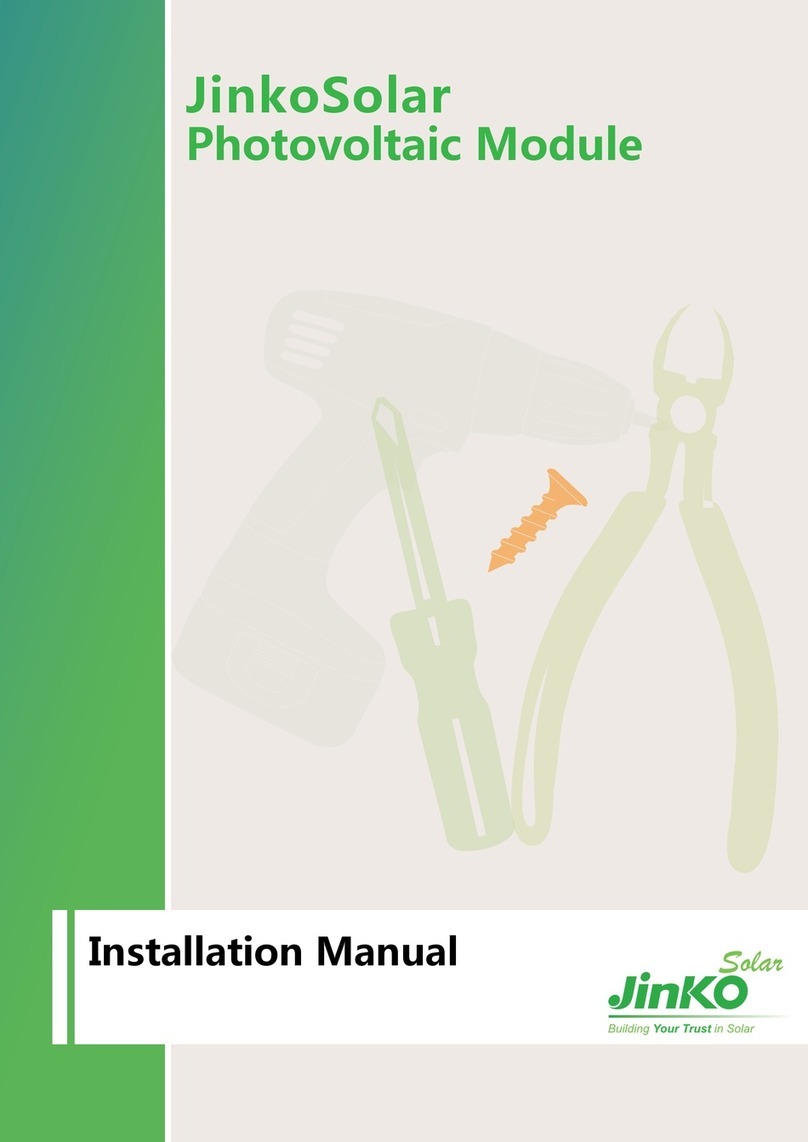
Jinko Solar
Jinko Solar JKM***PP-60 installation manual

CORAB
CORAB D-015 installation manual

CanadianSolar
CanadianSolar CS3W-PB-AG Series installation manual

WhisperPower
WhisperPower Whisper Solar Flex 124 FC installation manual

Sun-Tech
Sun-Tech STP225S-16/Tem installation guide
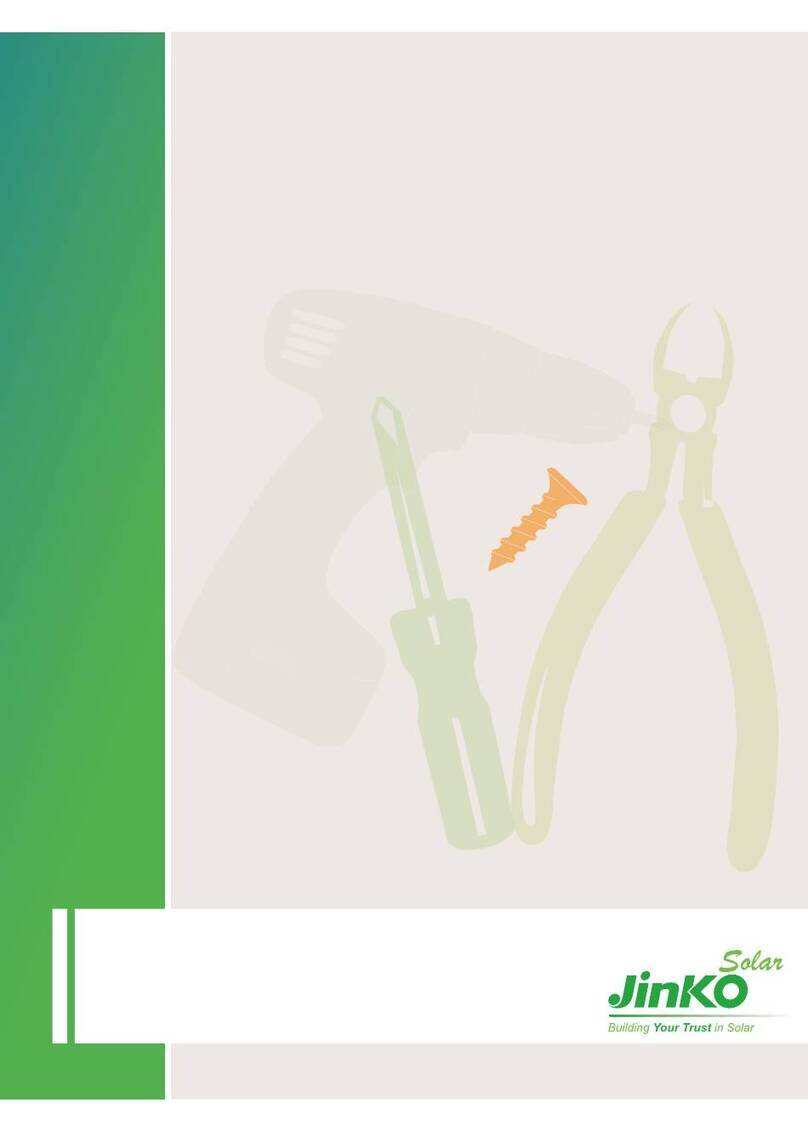
Jinko Solar
Jinko Solar JKM420N-54HL4-B (MC4) installation manual

CanadianSolar
CanadianSolar CS3W-PB-AG Series installation manual
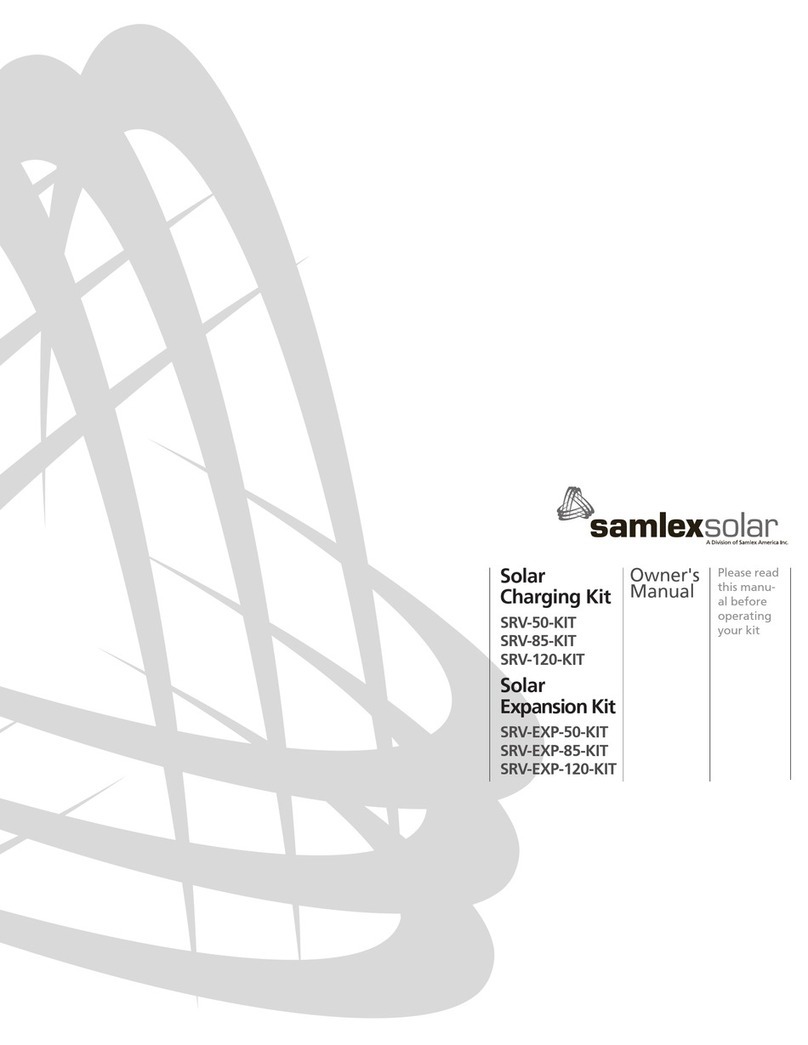
samlexsolar
samlexsolar SRV-50-KIT owner's manual
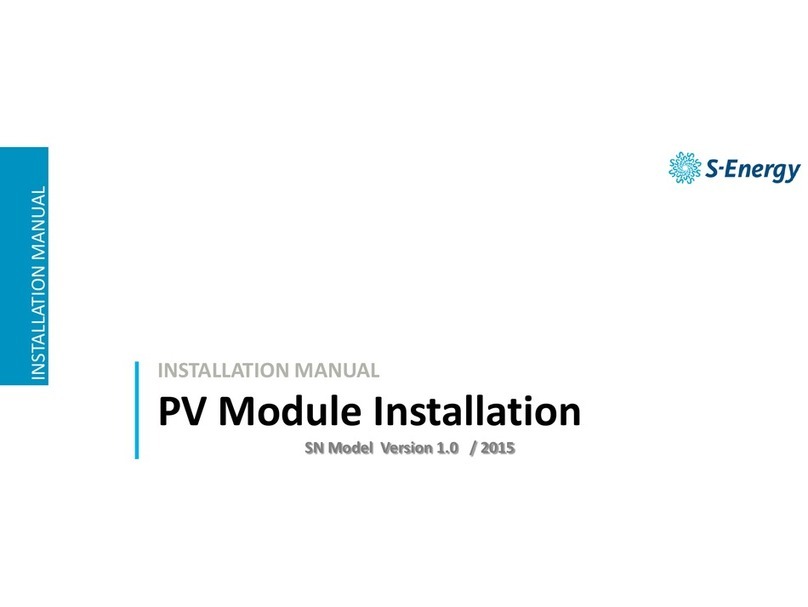
Senergy
Senergy SN245P-10 installation manual
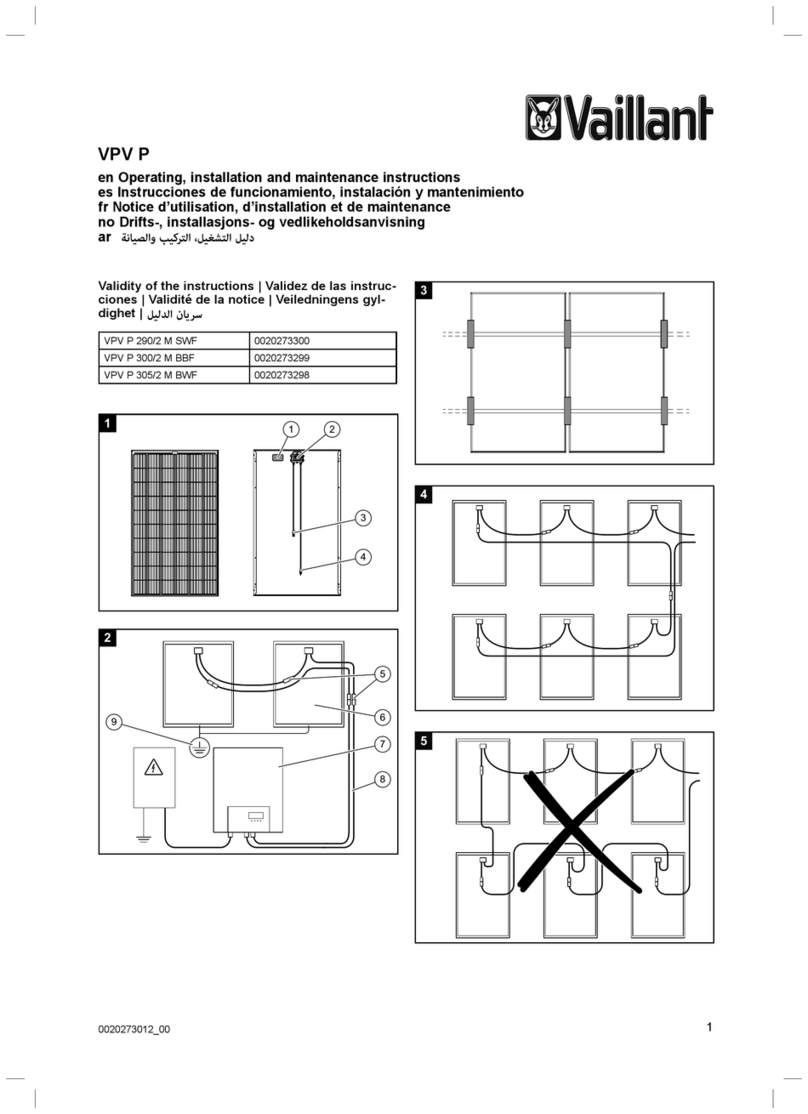
Vaillant
Vaillant VPV P 290/2 M SWF Operating, installation and maintenance instructions



